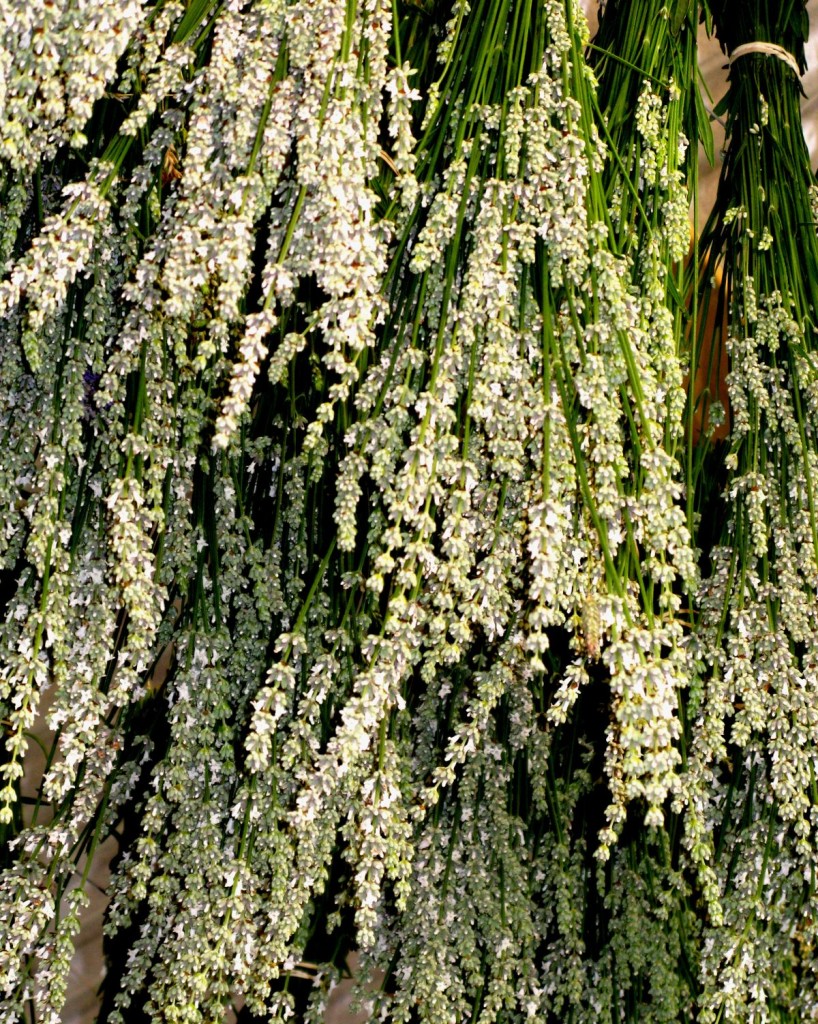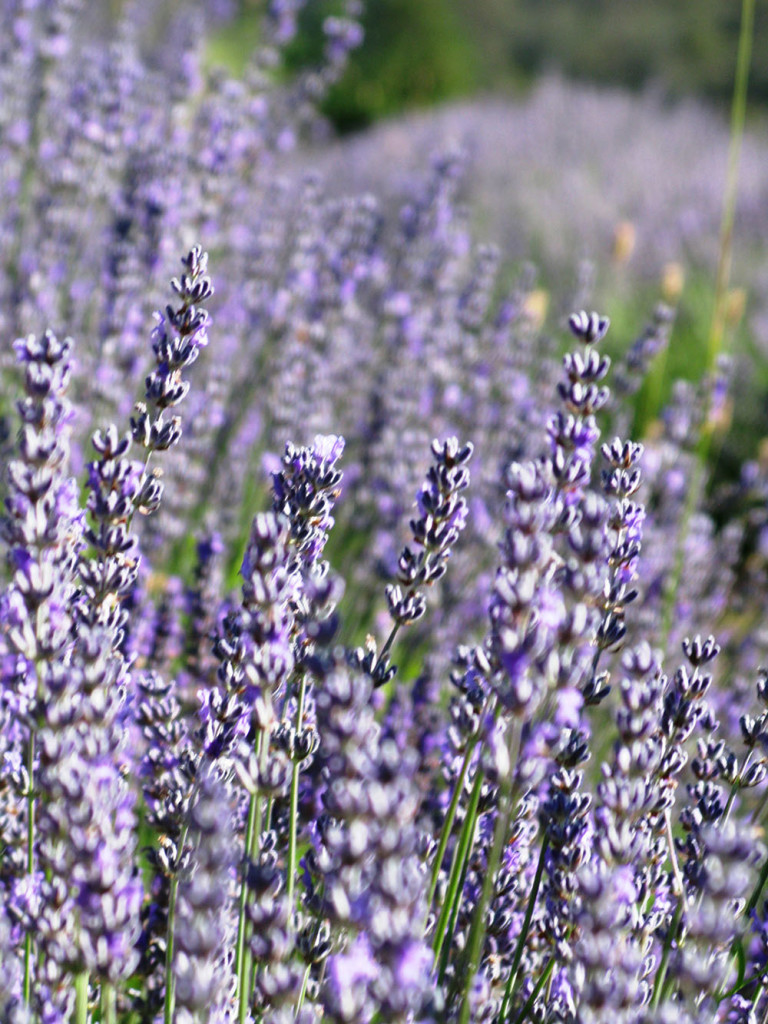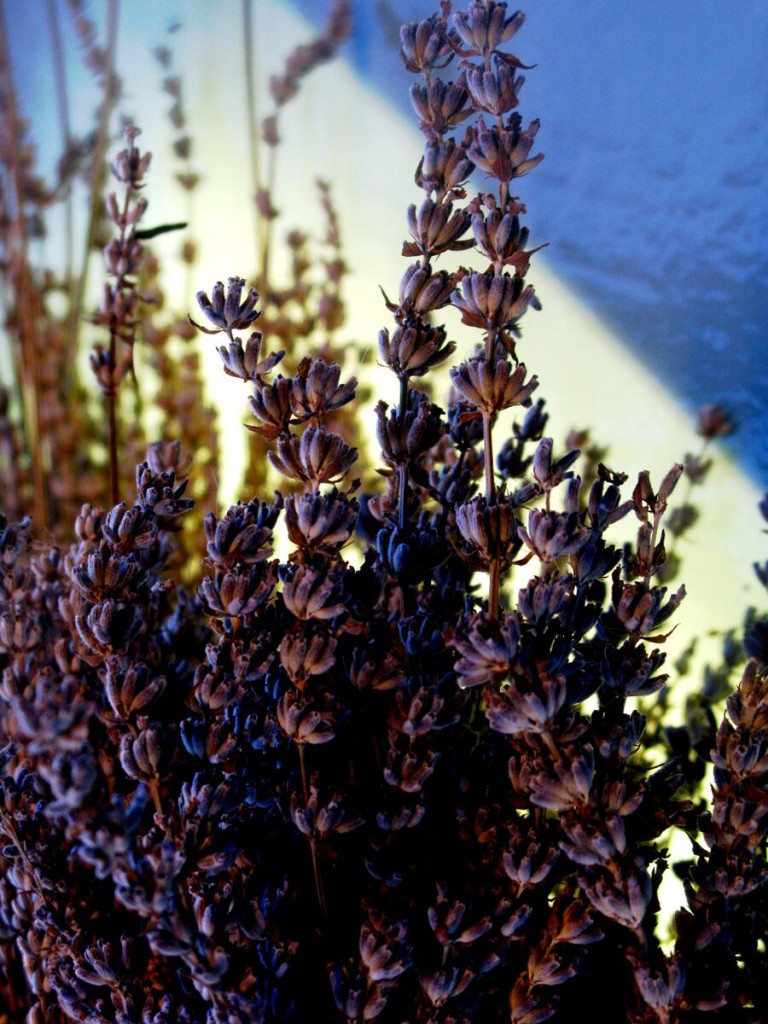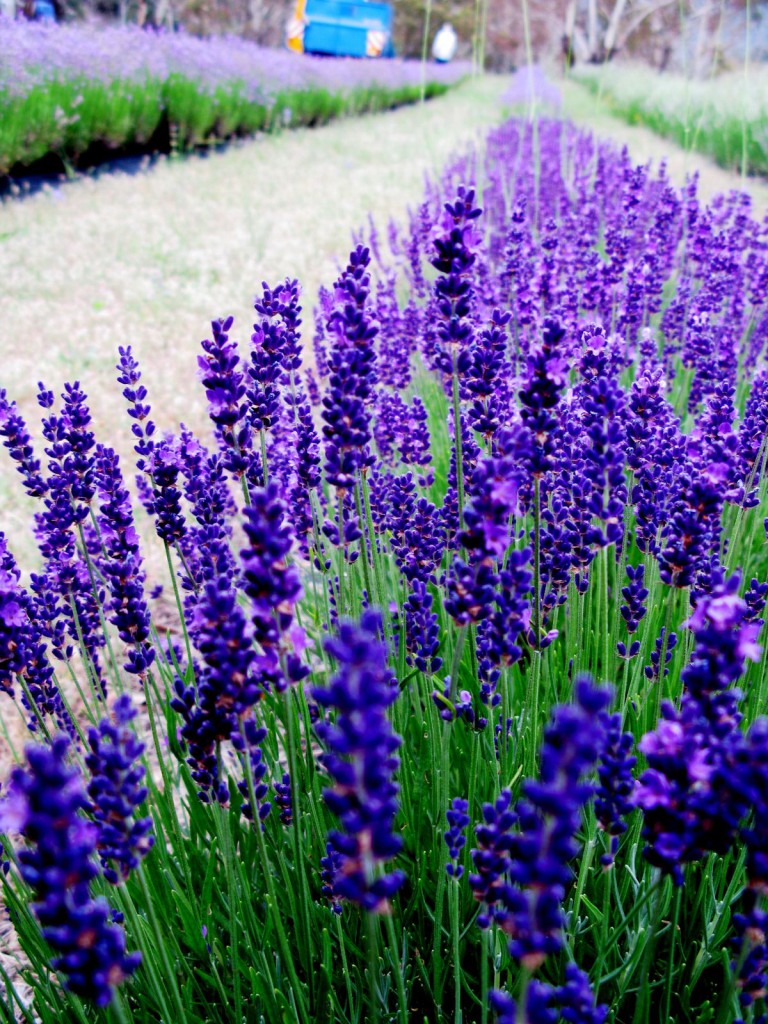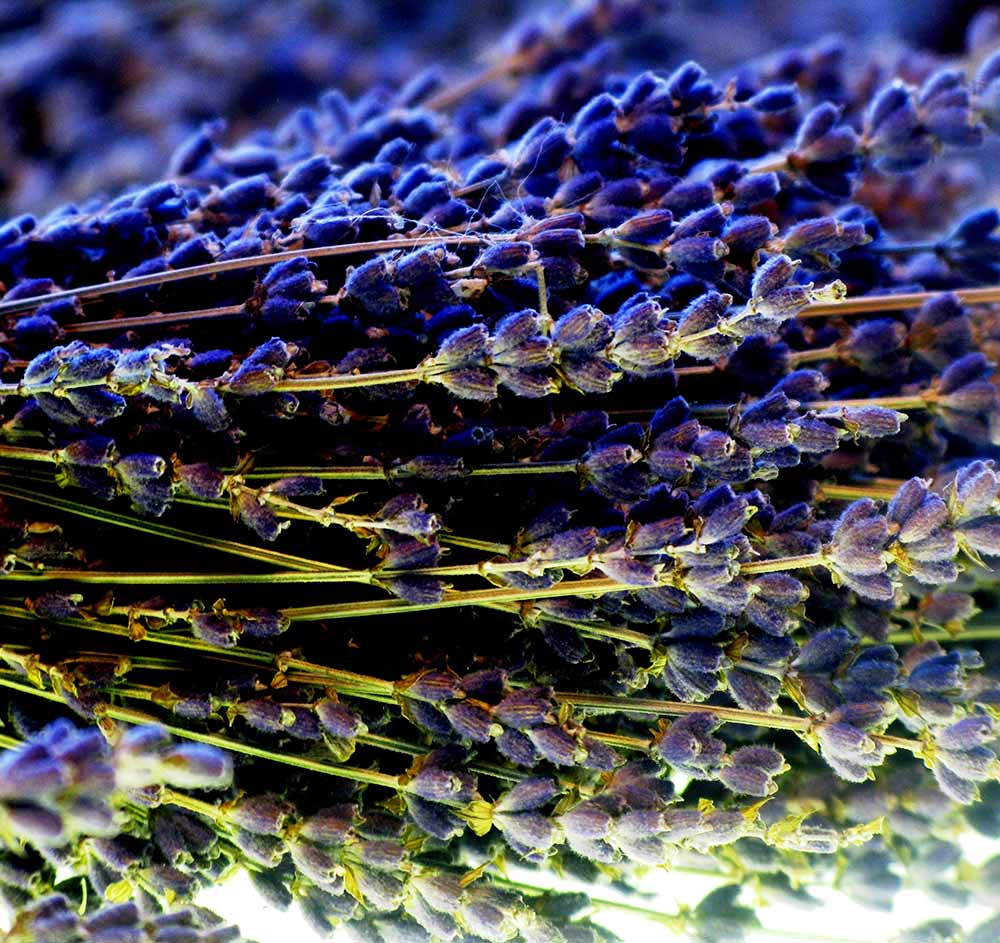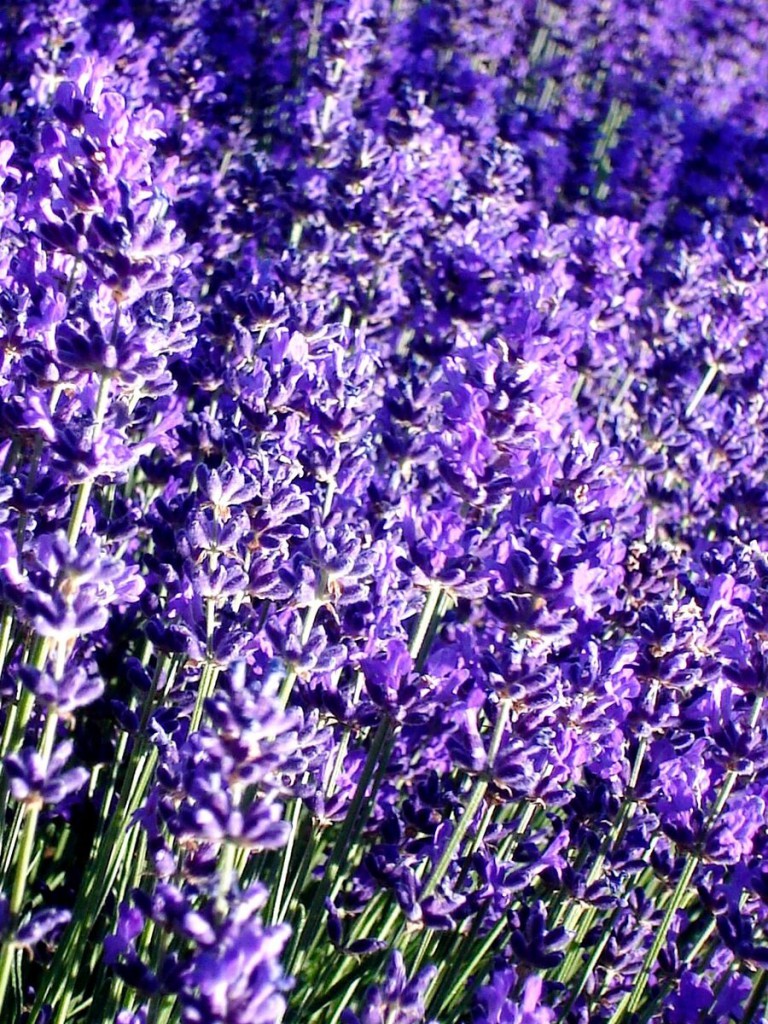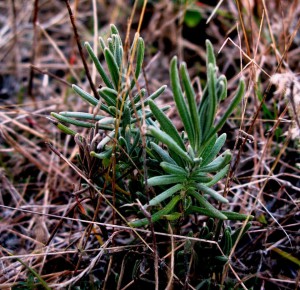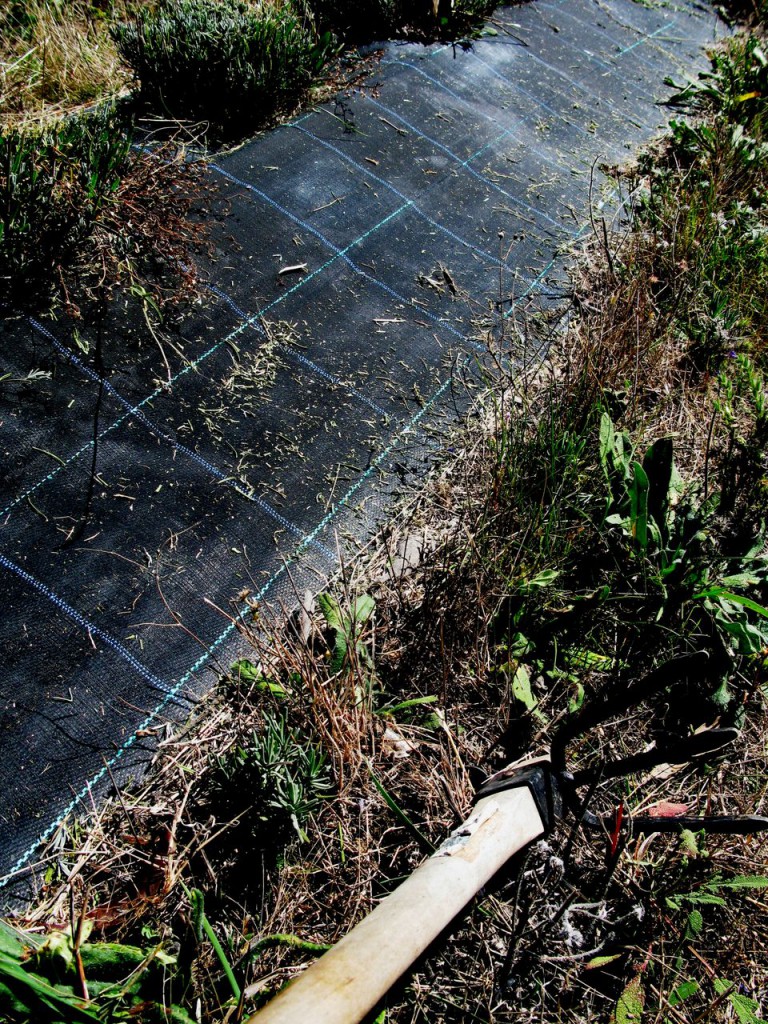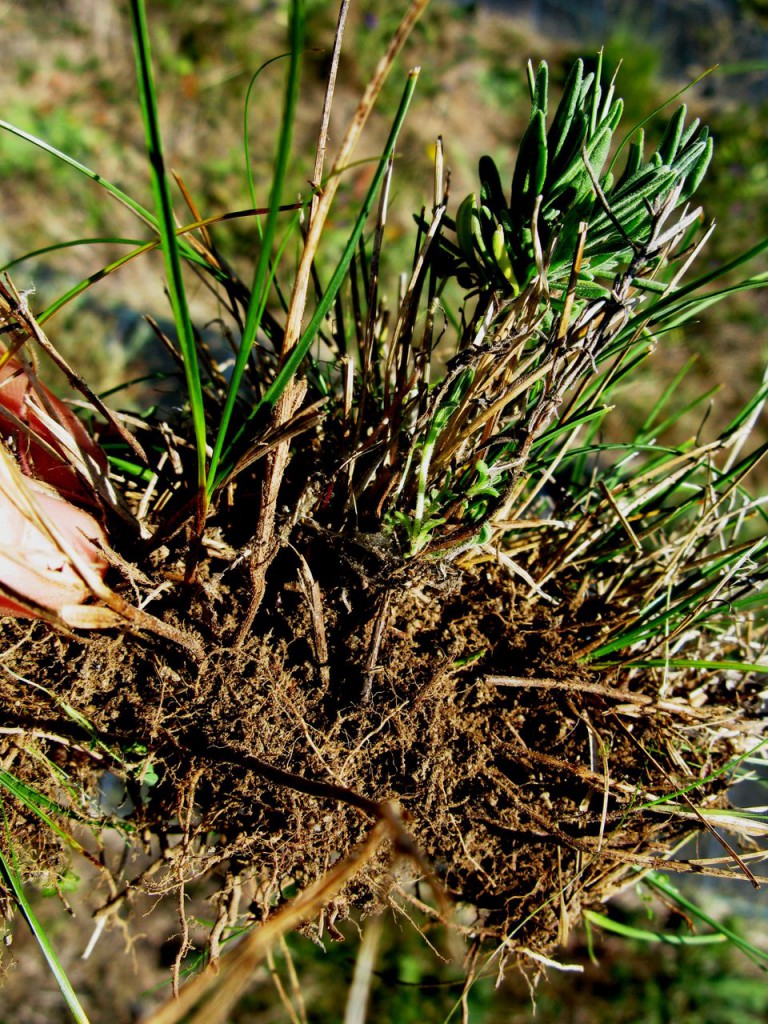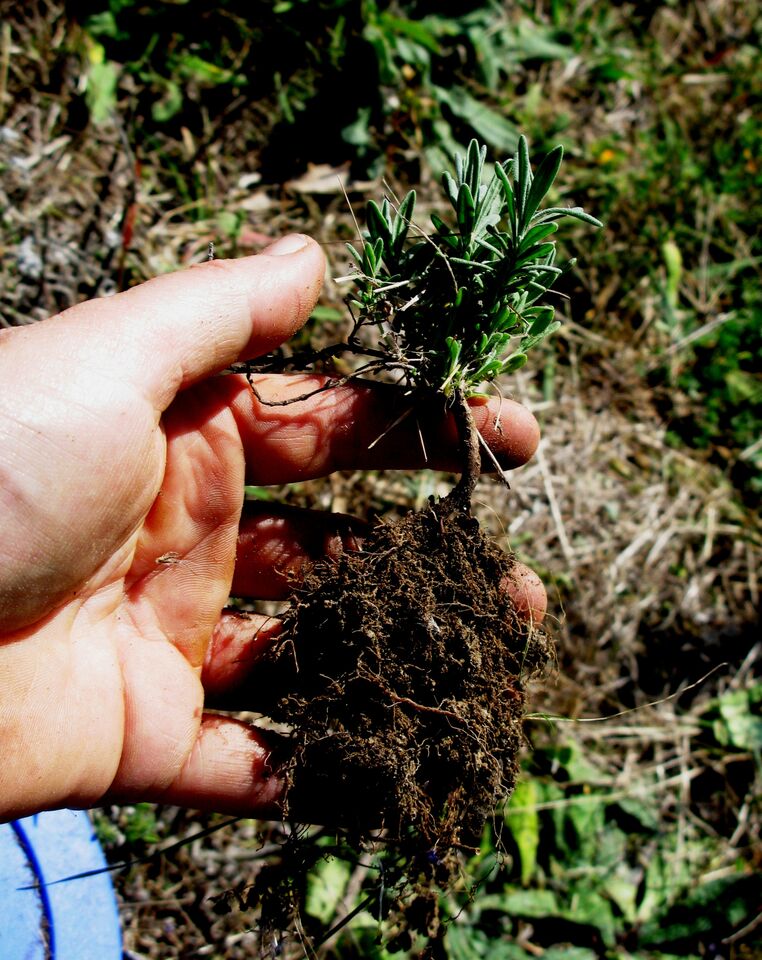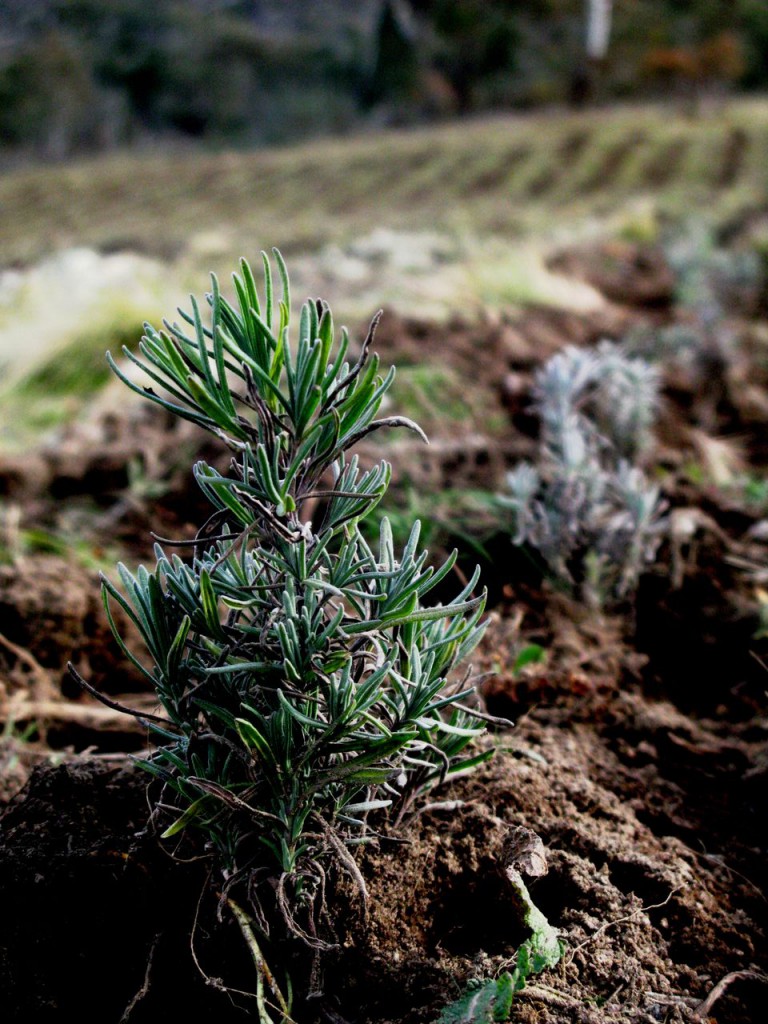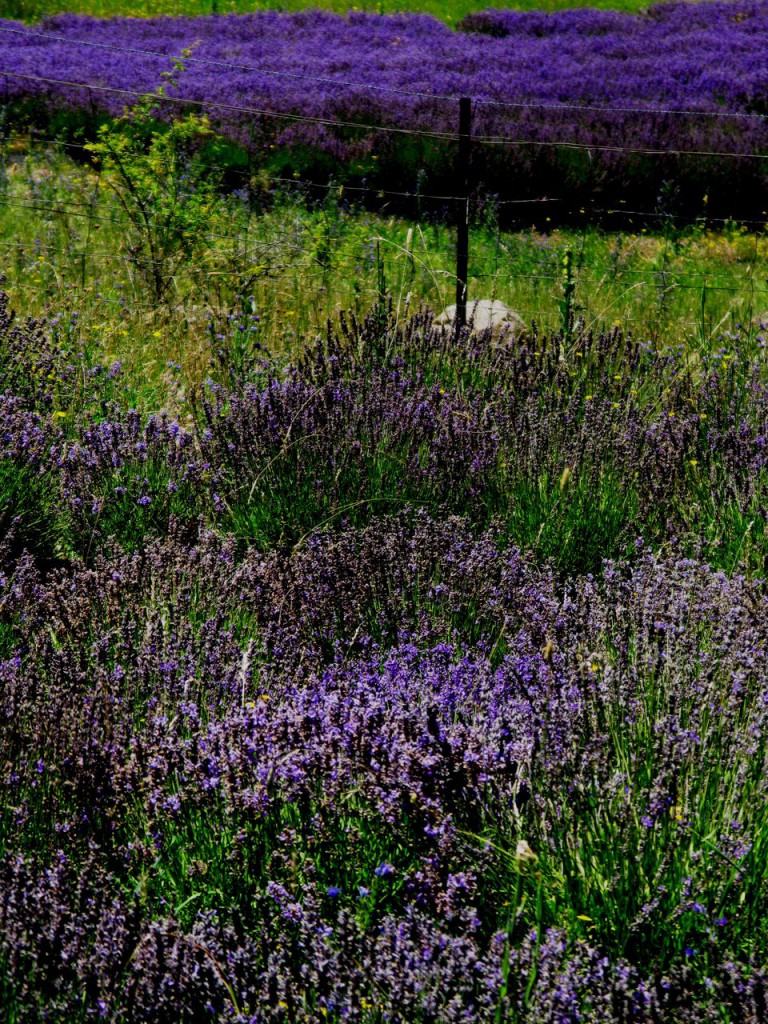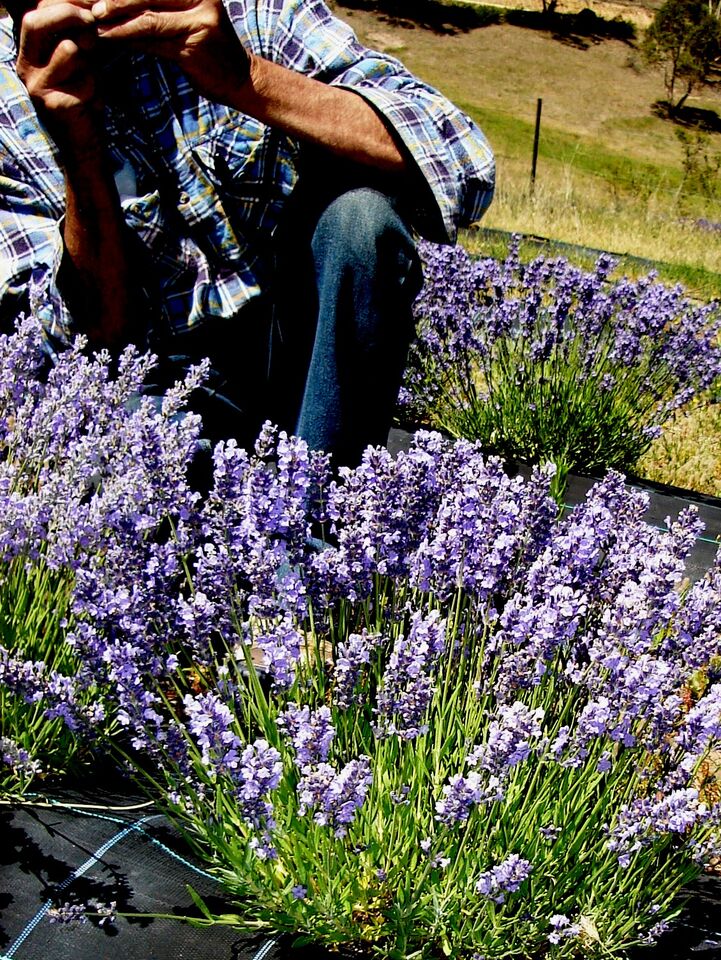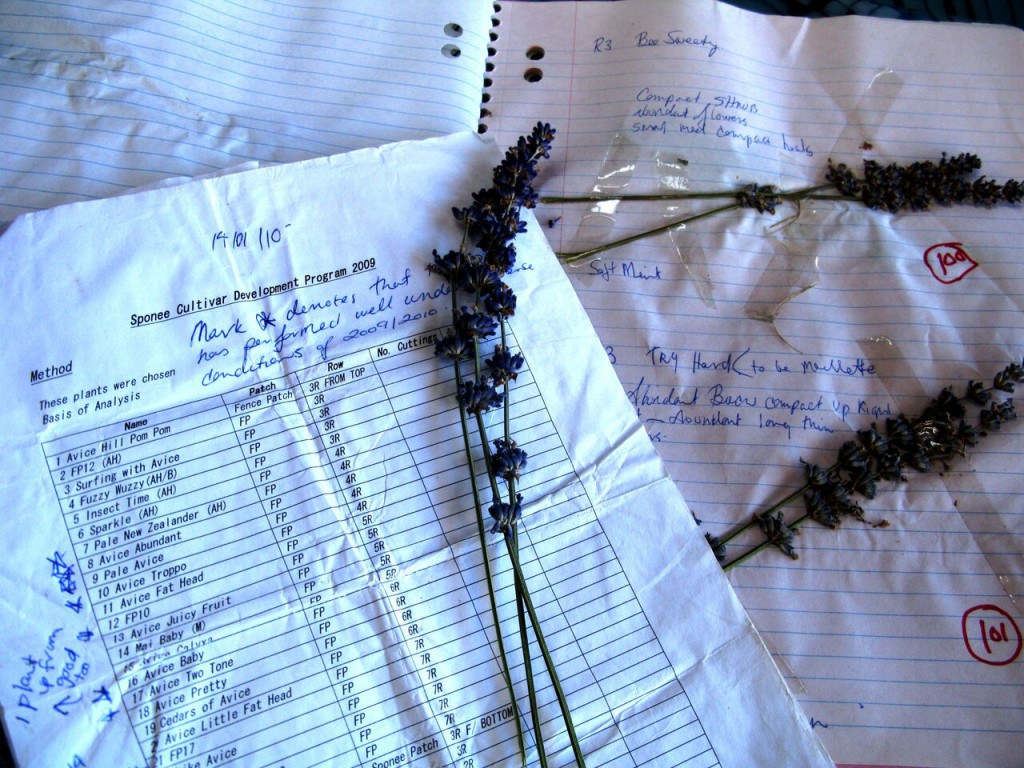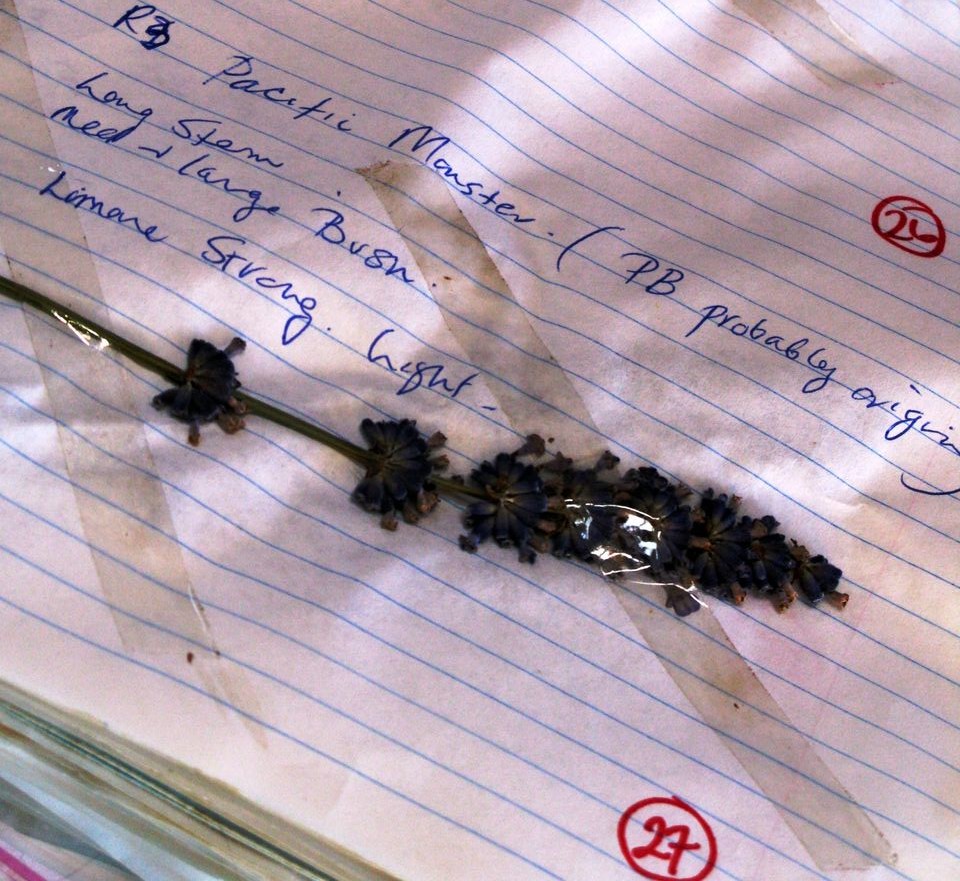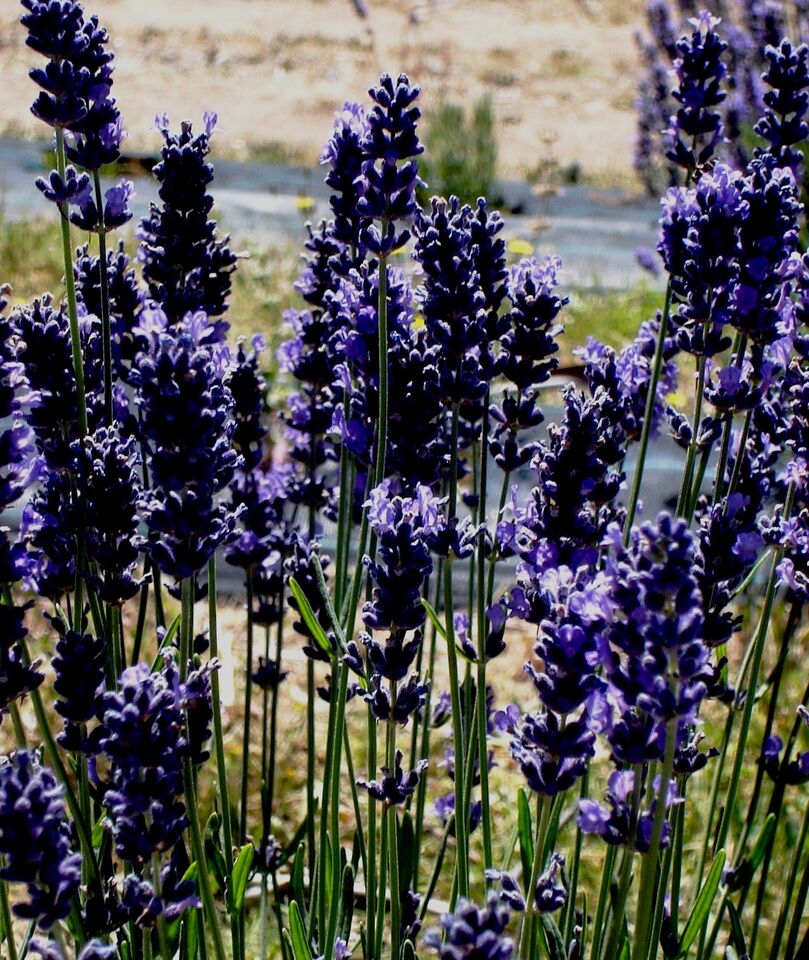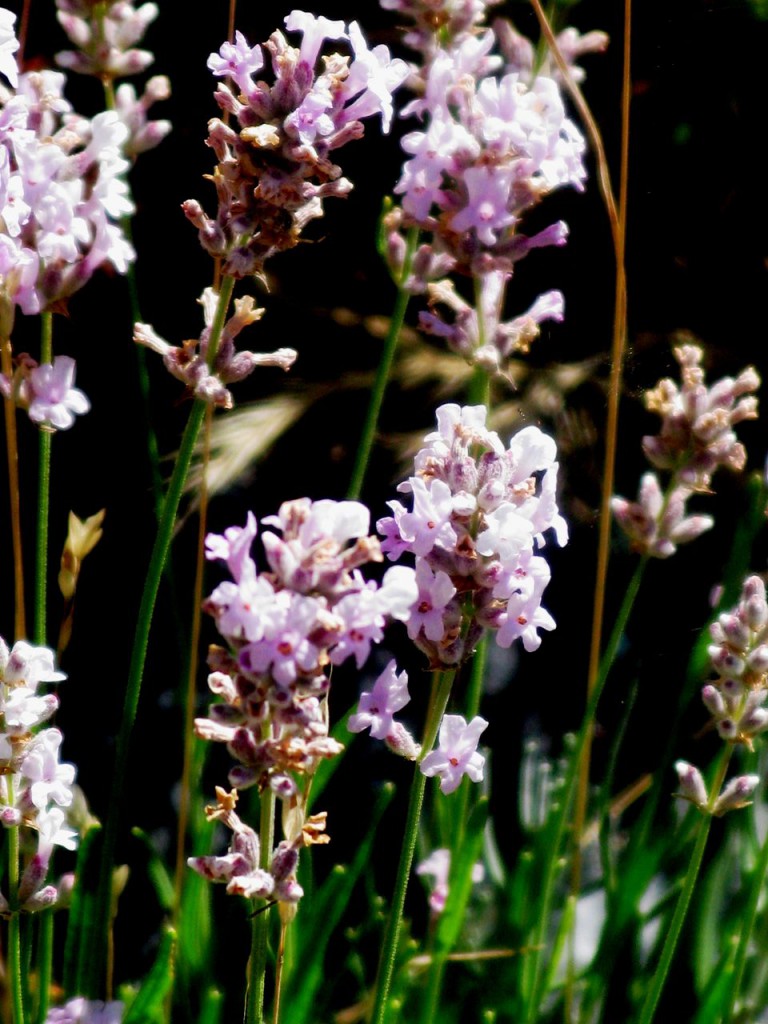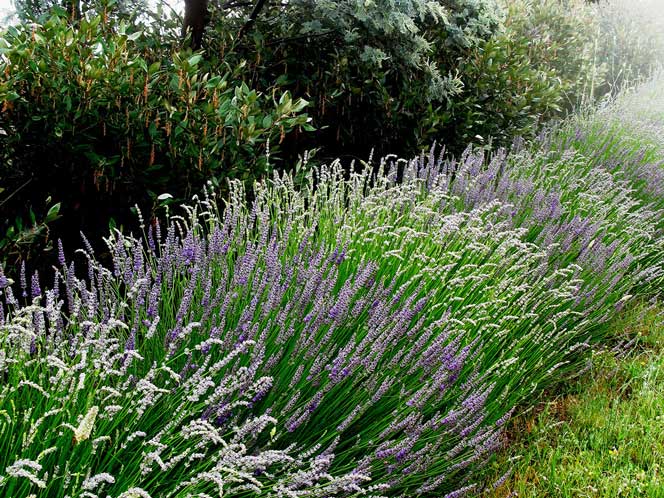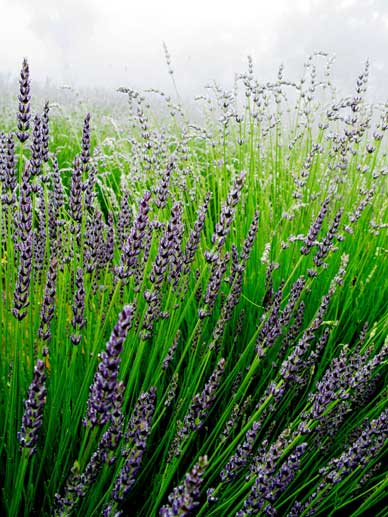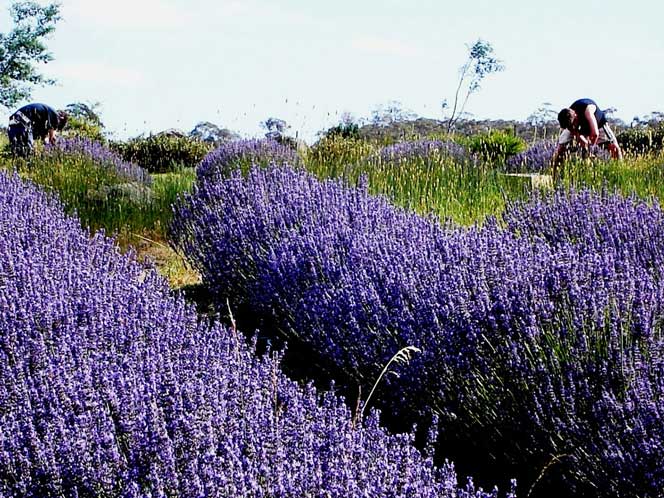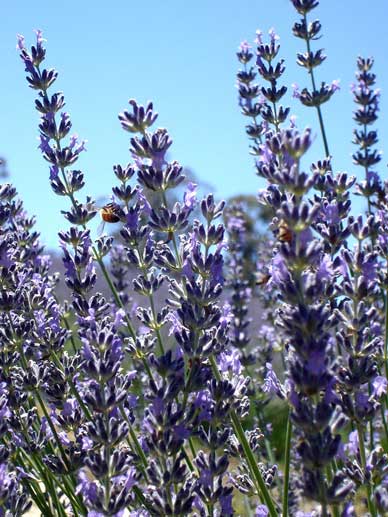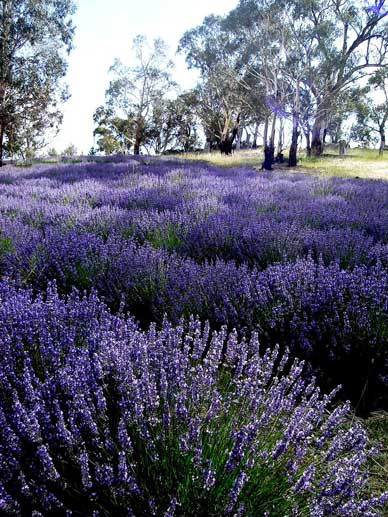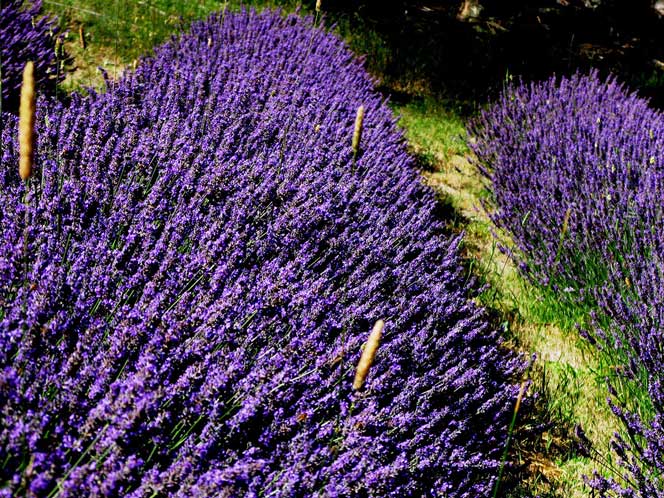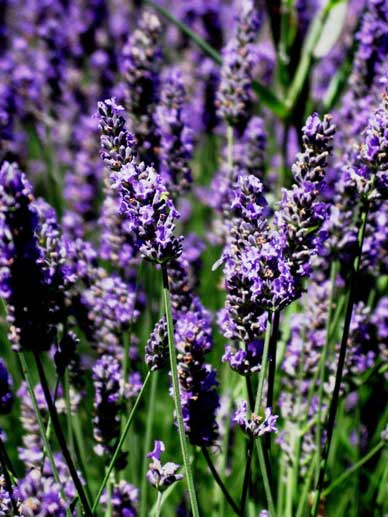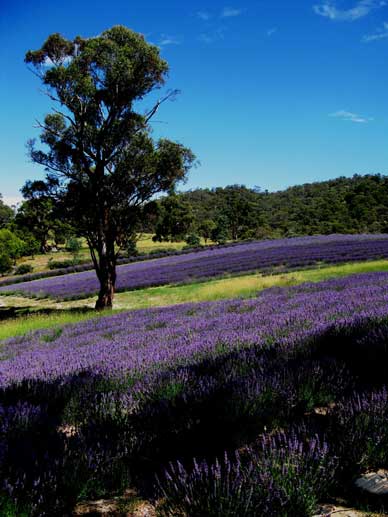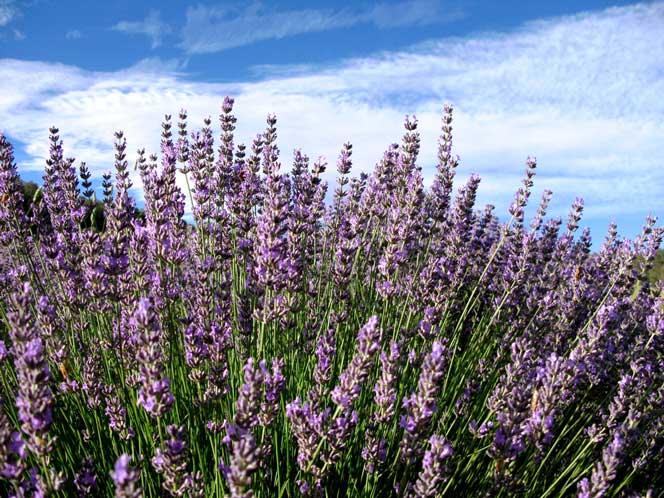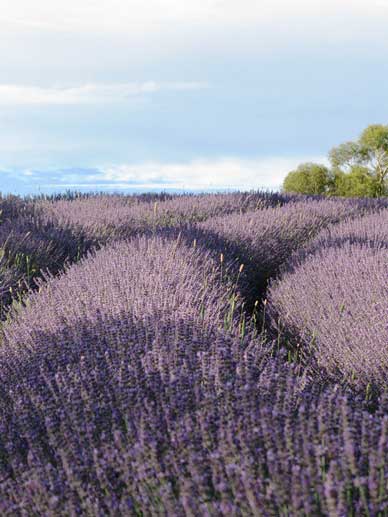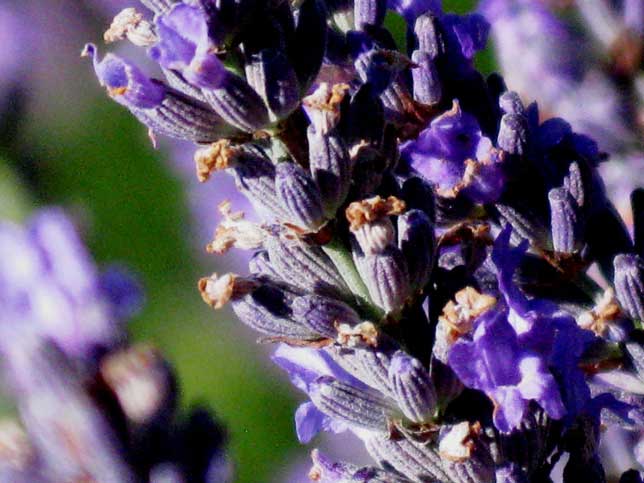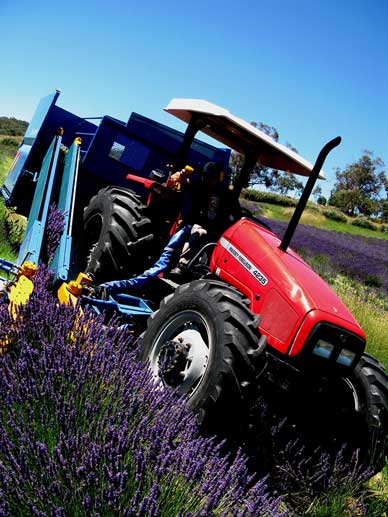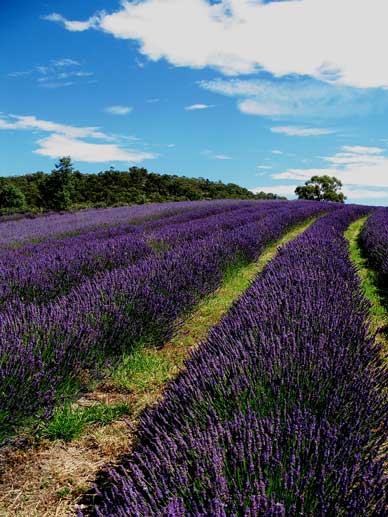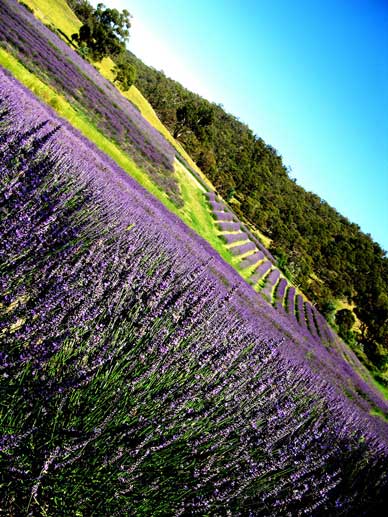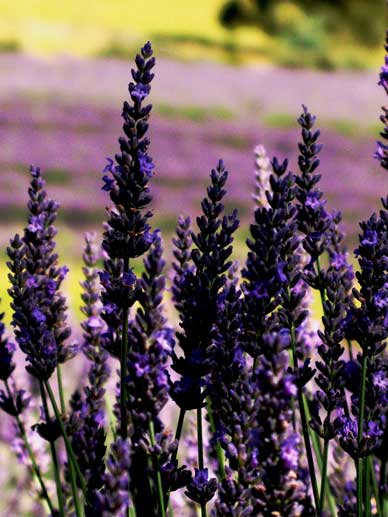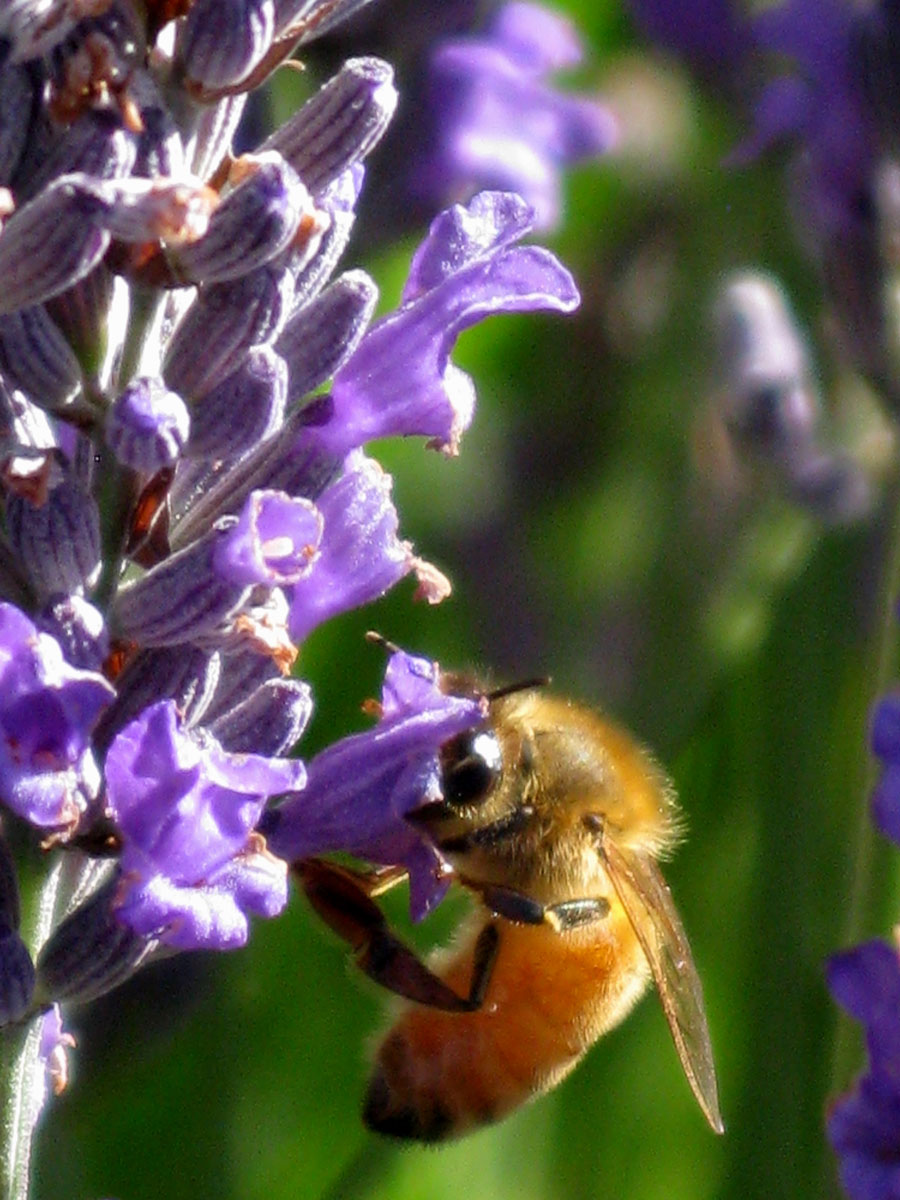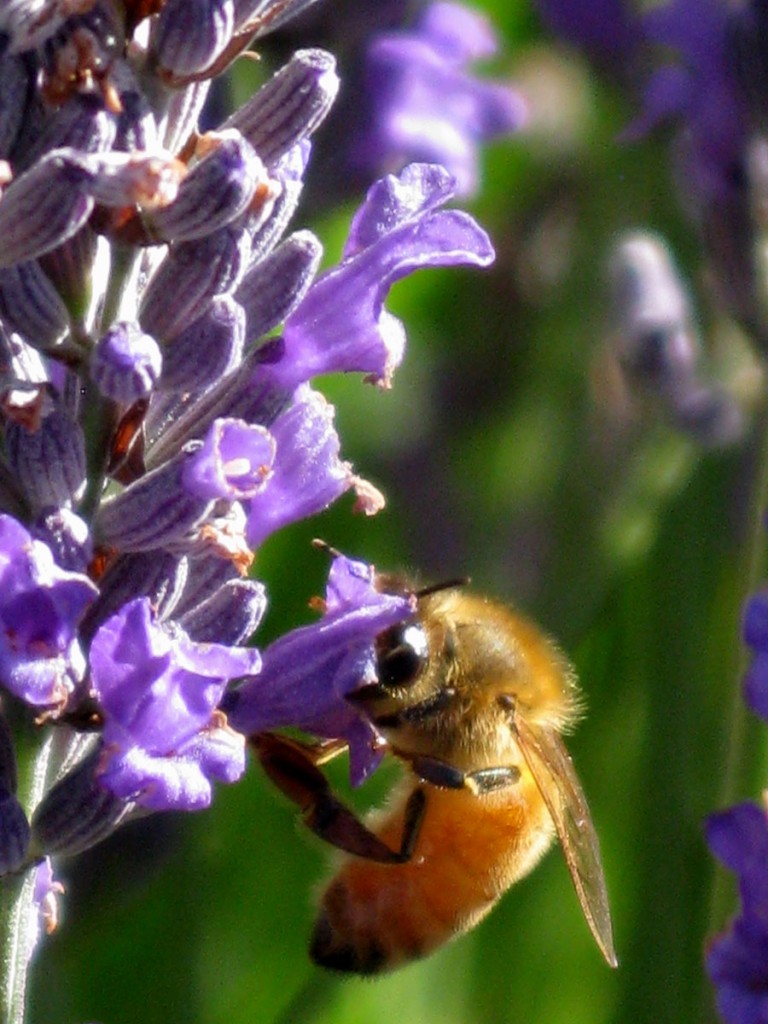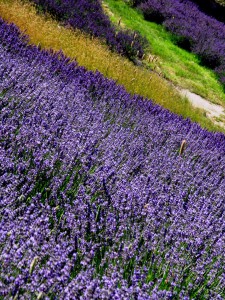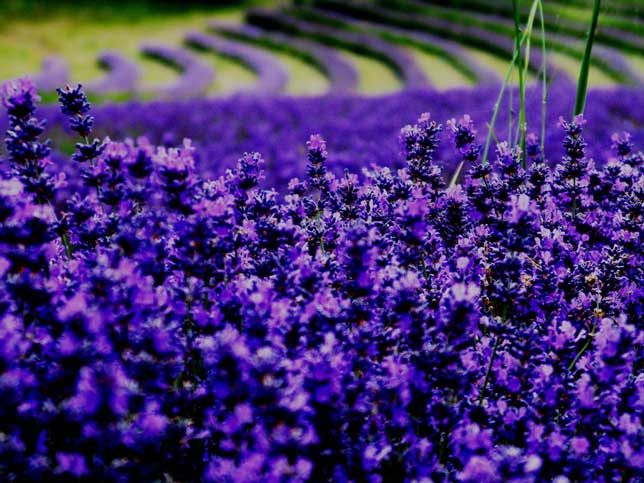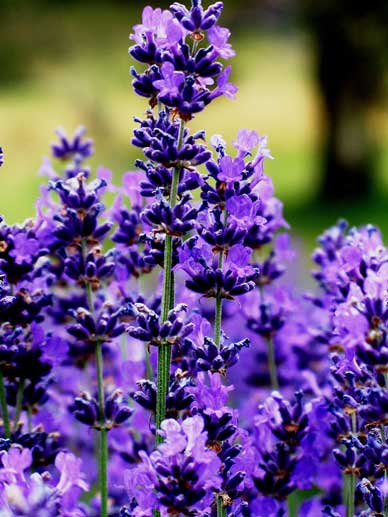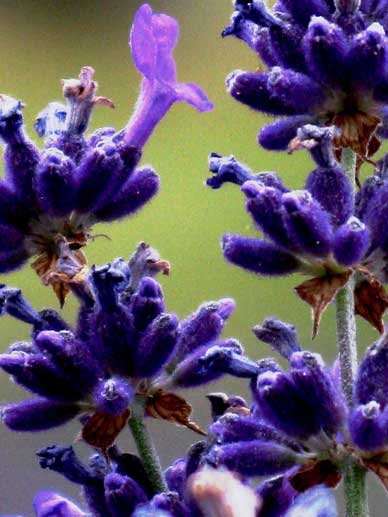
Our drying lavenders (and lavandins)
Not all varieties of lavender, or lavandin, are useful for essential oil production. This is less to do with essential oil chemistry than with the fact that low yields make them unviable for commercial purposes. In the early stages of our farm when exploring different cultivars on which to build our essential oil production we planted a number of cultivars which did not meet our yield criteria. These plants have become the centre of our dried lavender production, and a number of them have special qualities which make them ideal for this purpose. Our special drying lavenders are the Lavandula angustifolias’, ‘Twickle Purple’ and ‘Hidecote Blue’. Both these lavenders have florets or calyxes which maintain their dark purple colour in the drying process when most other lavenders grey as they dry. The delicate fragrance of these plants makes them ideal culinary lavenders. Our special drying lavandin is Lavandula x intermedia Alba, a cultivar which produces white flowers with a subtle lemony fragrance. We also dry a selection of our essential oil plants, which needless to say have a far more intense aroma but unfortunately do grey when dry. These oil plants are great for pot pourri or any other application where a strong fragrance is needed. The oil cultivars we dry are the lavender; ‘Bee’ and lavandins’; ‘Grosso’, ‘Abriallis’ and ‘Margaret’.
The drying process
To produce dry lavender, fresh flower is sickle harvested and bunched together with rubber bands. The bunched lavender is hung on wires in the drying shed for a number of weeks until fully dry. Dry lavender is then stored in cardboard boxes until stripped for loose lavender or sold on as bouquets.
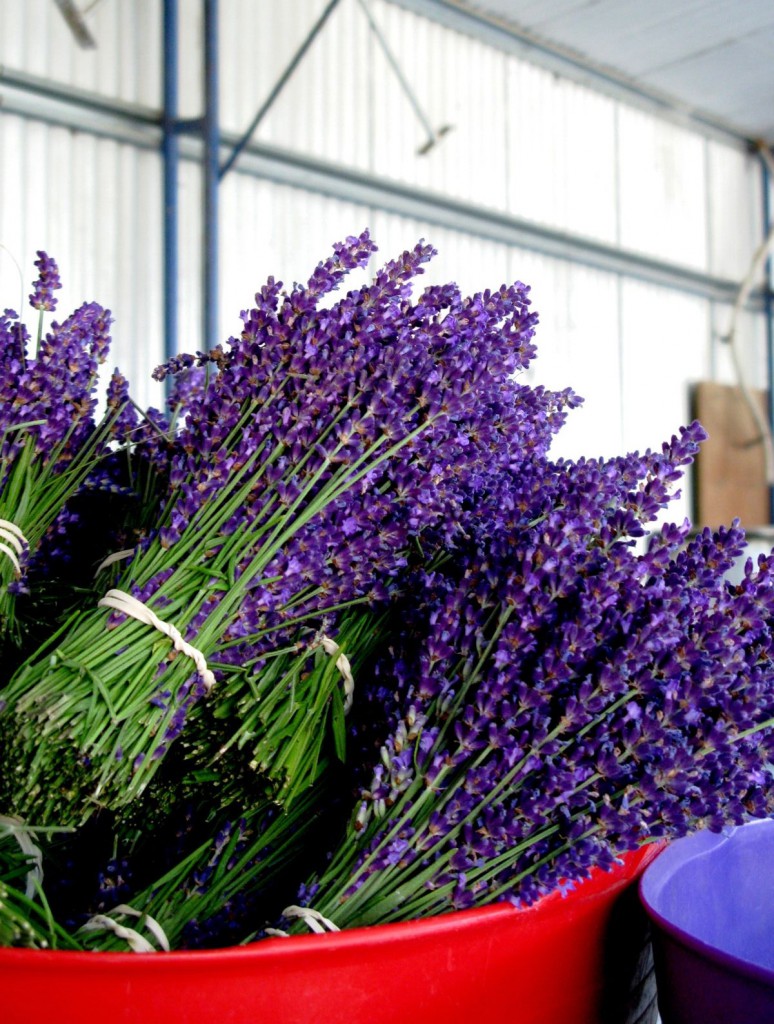
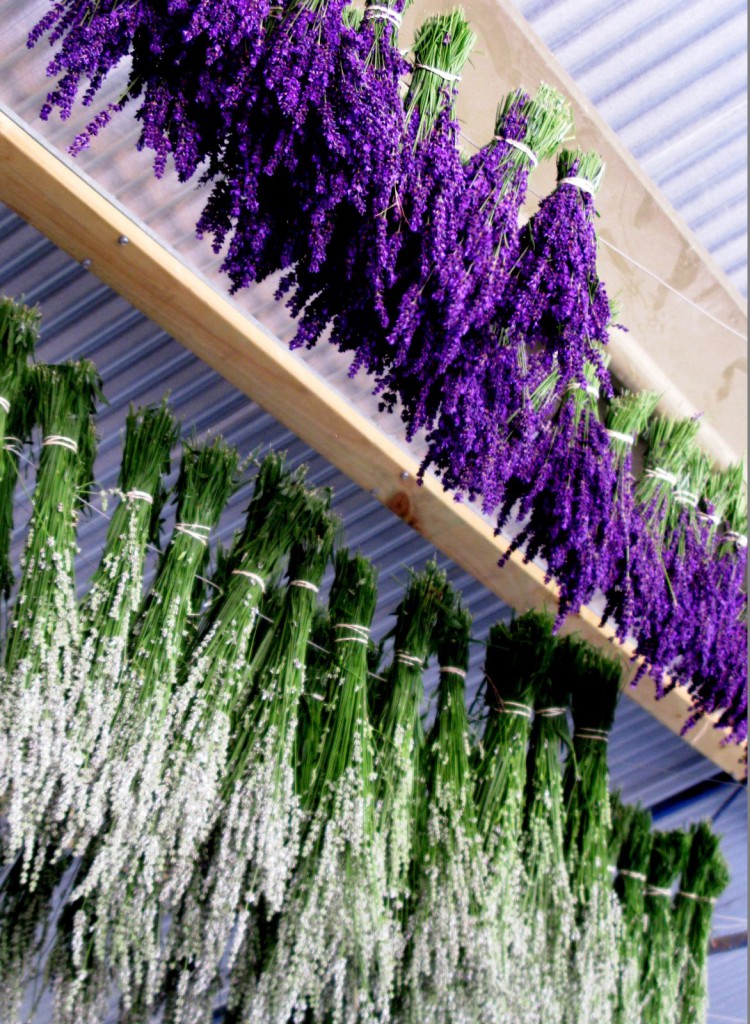
Snowy River Lavender’s drying cultivars
Lavandula x intermedia ‘Alba’
Lavandula x intermedia, Alba is a cultivar which produces white flowers with a subtle lemony fragrance. Alba’s long stems and unusual colouring makes it ideal as a, bunching lavender for floral displays.
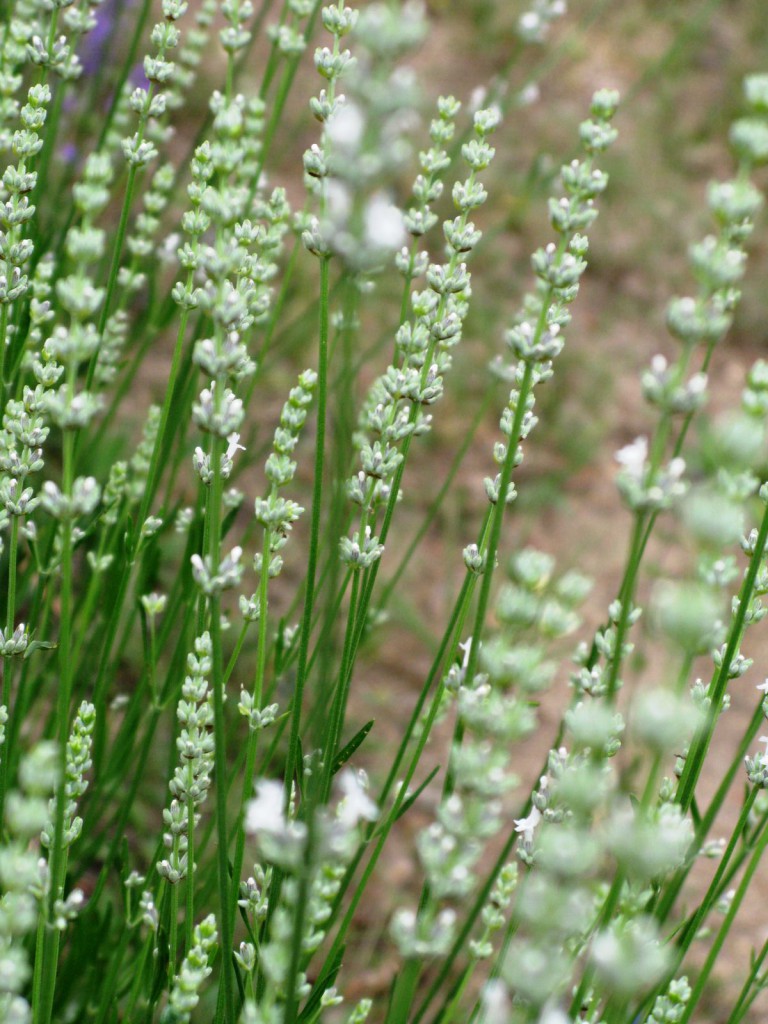
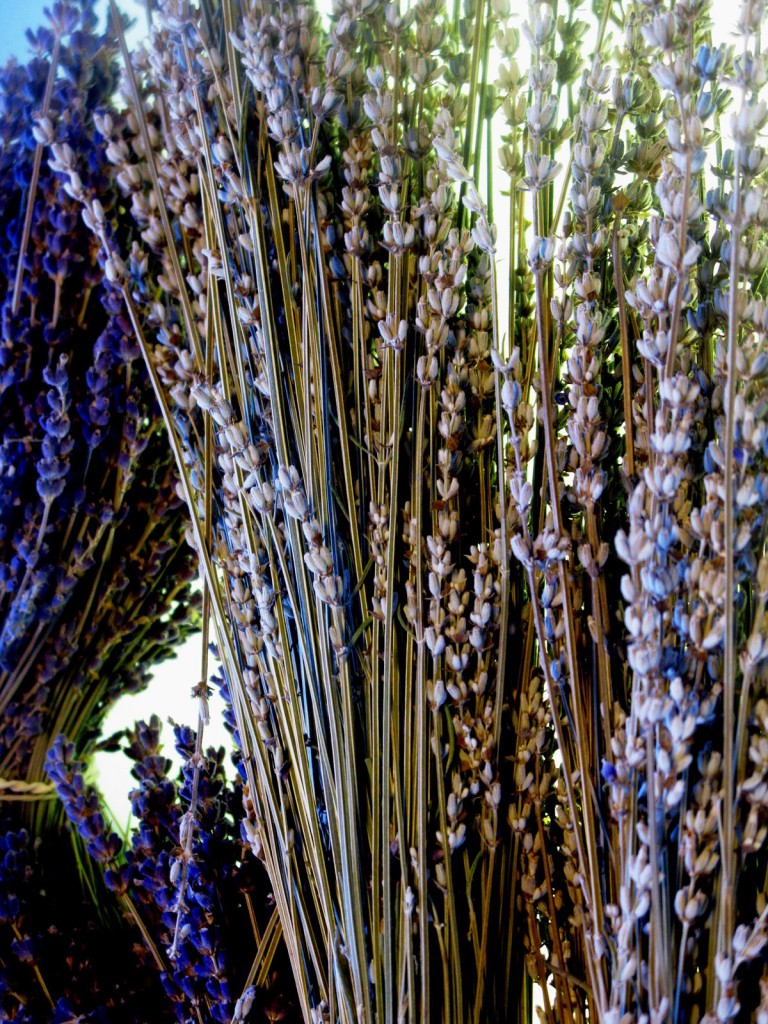
Lavandula x intermedia ‘Grosso’
Lavandula x intermedia Grosso produces large compact conical spikes which while dark purple when fresh dry to a steely silver mauve. As a premiere essential oil producer Grosso’s dry florets have an intensely refreshing and stimulating aroma. As with all our oil plants Grosso florets are great for pot pourri or any other application where a strong fragrance is needed. The camphor and cineole content of lavandin plants make their florets stimulating inclusions in body scrubs and as a botanical inclusion in hand crafted soaps. Grosso’s sculptural spikes also make them wonderful when used in floral arrangements.
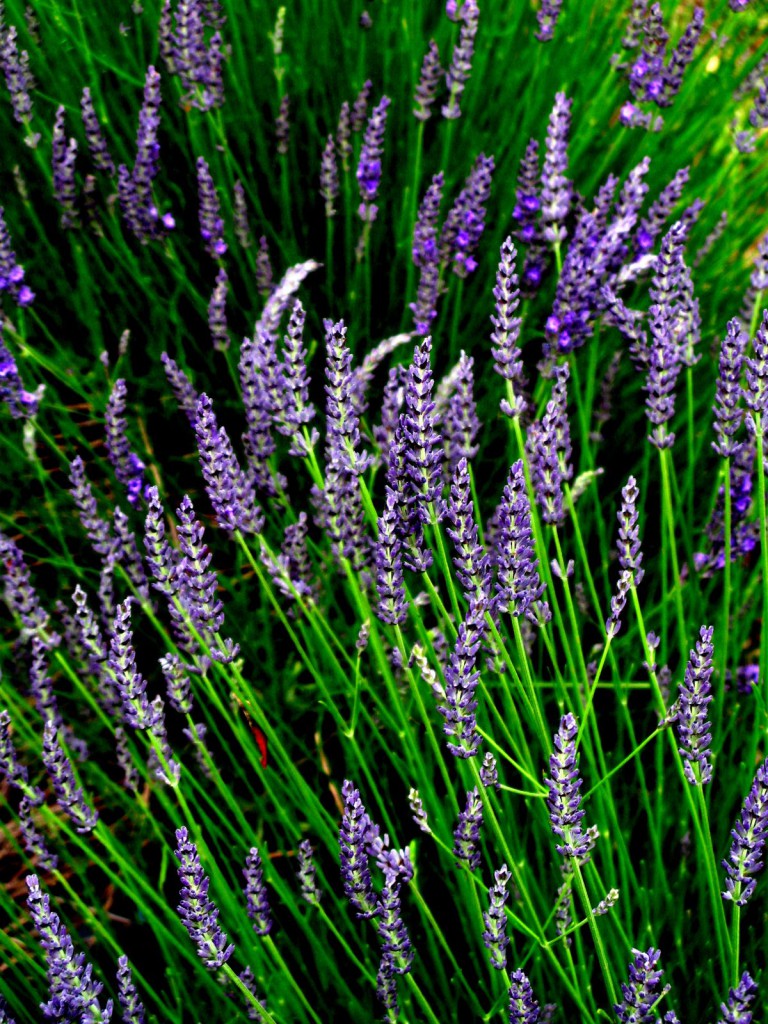
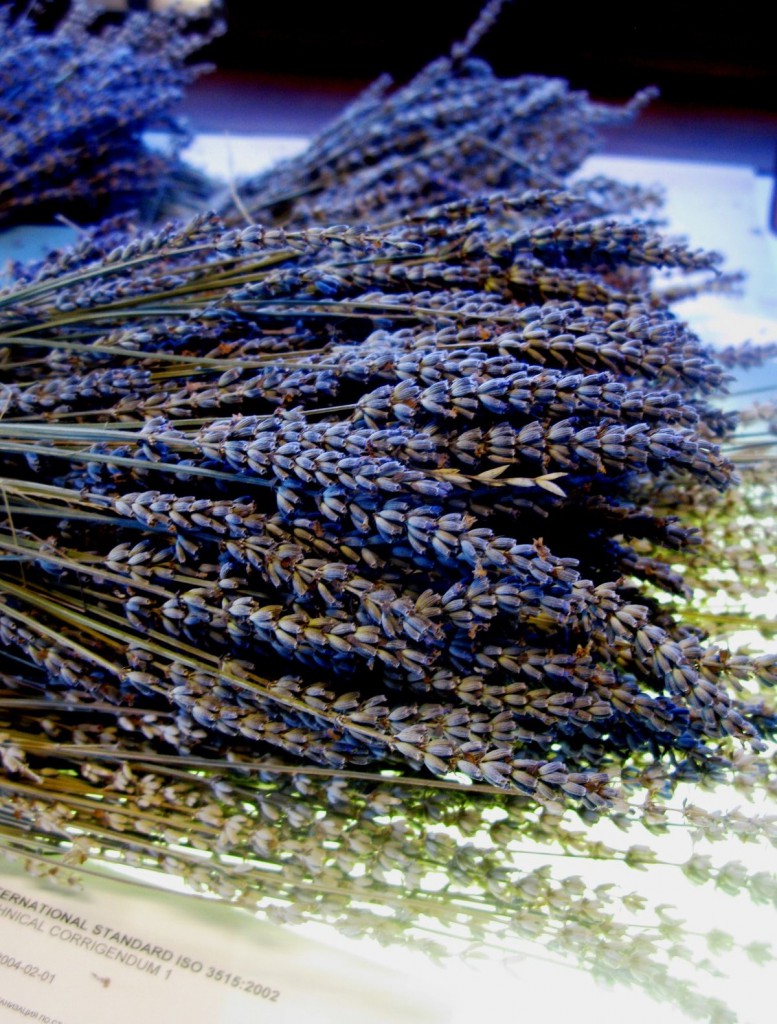
Lavandula x intermedia ‘Margaret’
Lavandula x intermedia Margaret produces large lacy spikes which dry to a silvery mauve grey. Margaret is a plant which produces high quality essential oil and this means its dry florets have a strong but refreshingly floral aroma with hints of camphor. As with all our oil plants, Margaret as loose lavender is great for pot pourri or any other application where a stronger fragrance is needed. The long lacy spikes are wonderful when used in floral arrangements and for interior decoration.
Lavandula angustifolia ‘Hidcote Blue’
Lavandula angustifolia, Hidecote Blue has florets that maintain their vivid purple colour in the drying process. The delicate floral fragrance, which hints peppermint, also makes it ideal as culinary lavender. Hidcote Blue is a small plant and makes pretty posies of dry lavender for floral decorating.
Lavandula angustifolia ‘Twickle Purple’
Lavandula angustifolia, Twickle Purple has florets that maintain their dark purple colour in the drying process. The refined lavender aroma also makes Twickle ideal for culinary purposes and its long lacy flower spikes, makes this lavender an elegant inclusion in floral displays.

